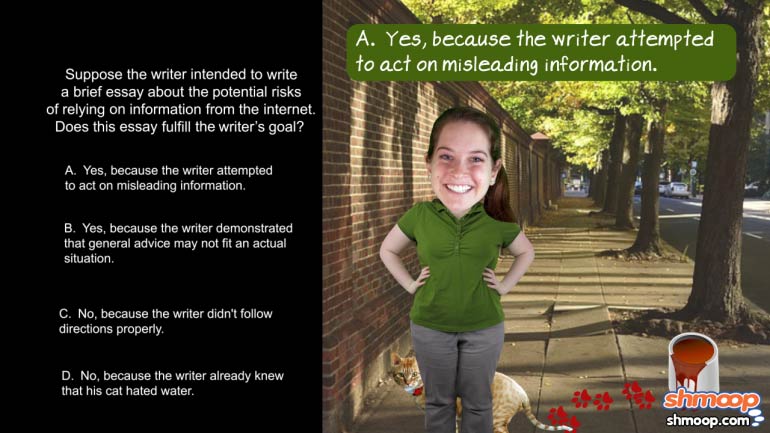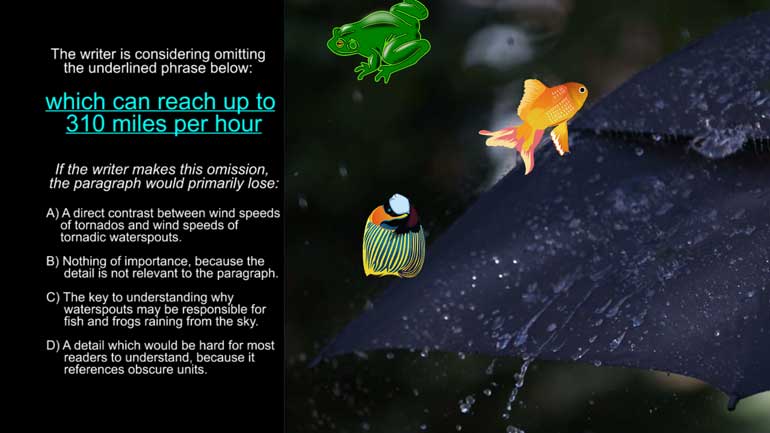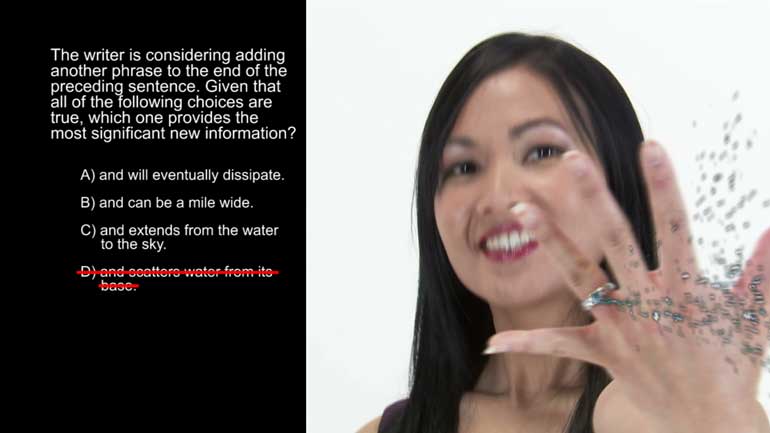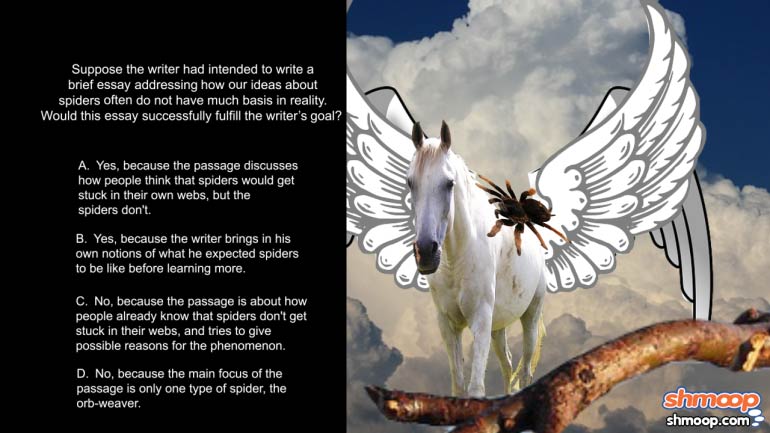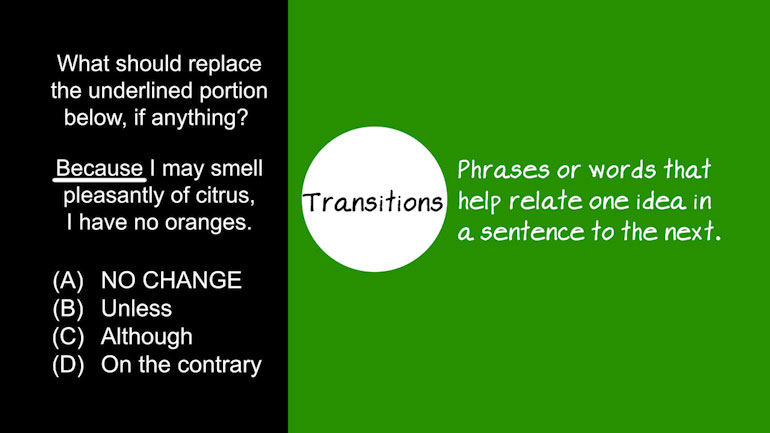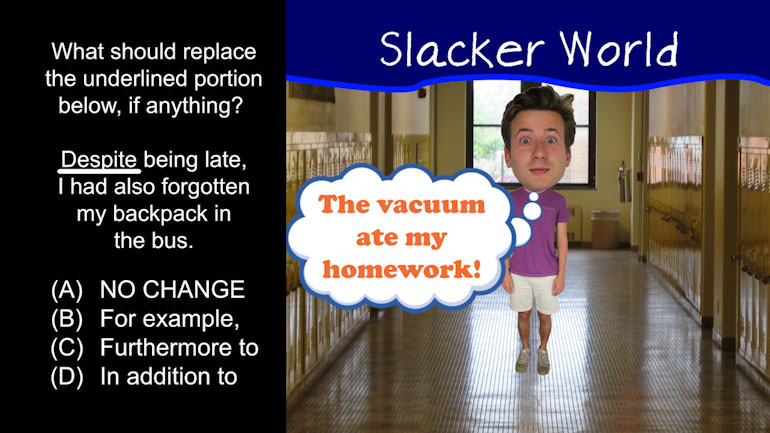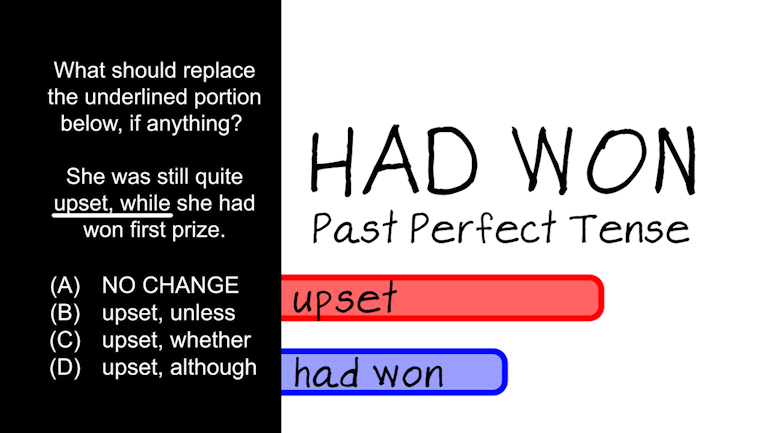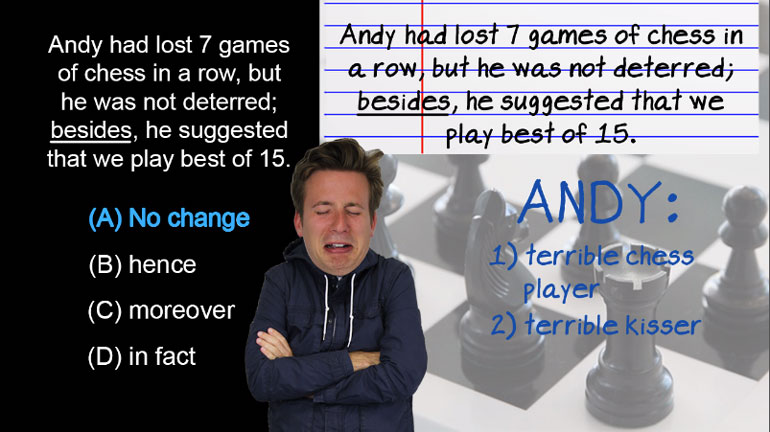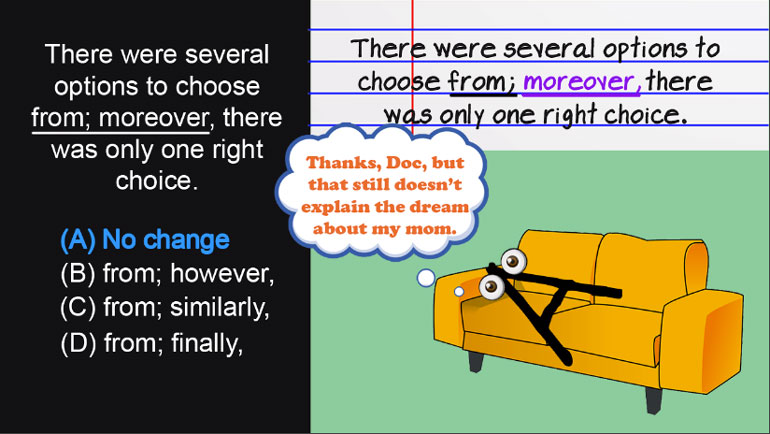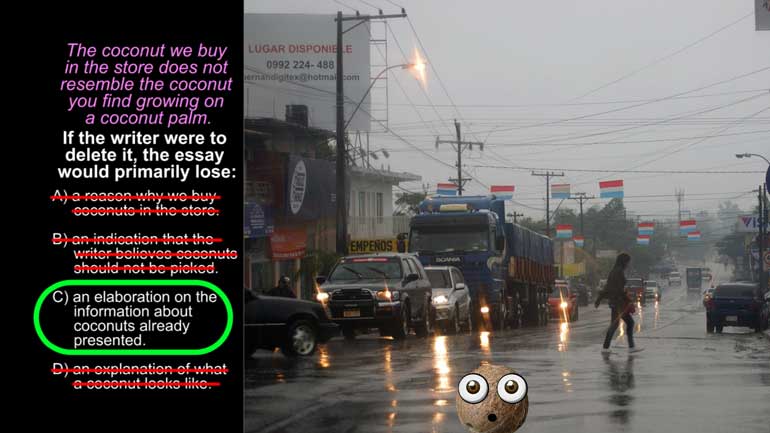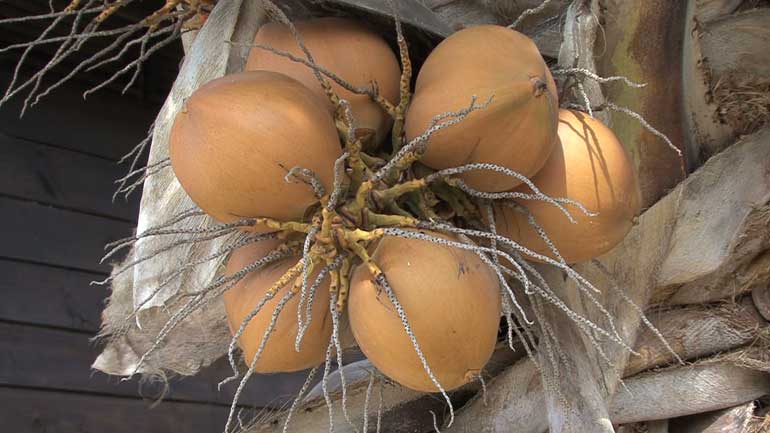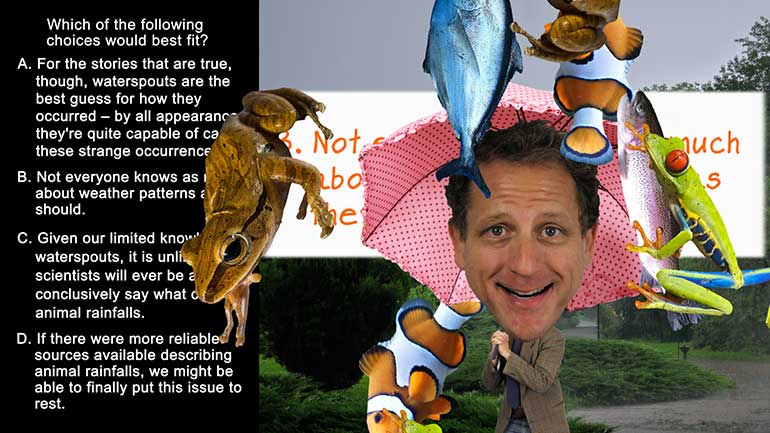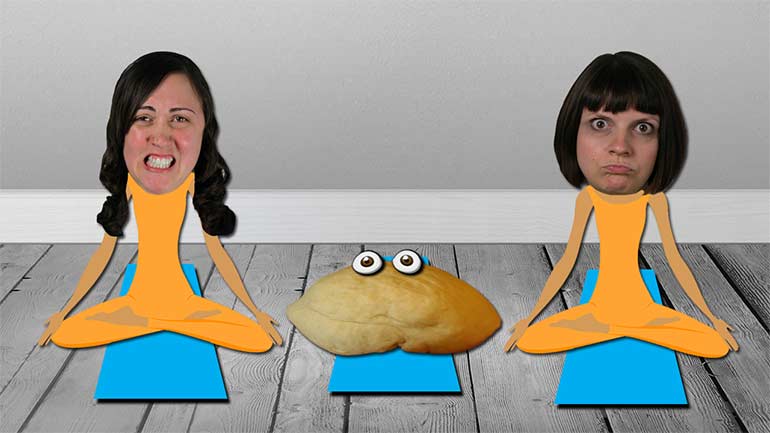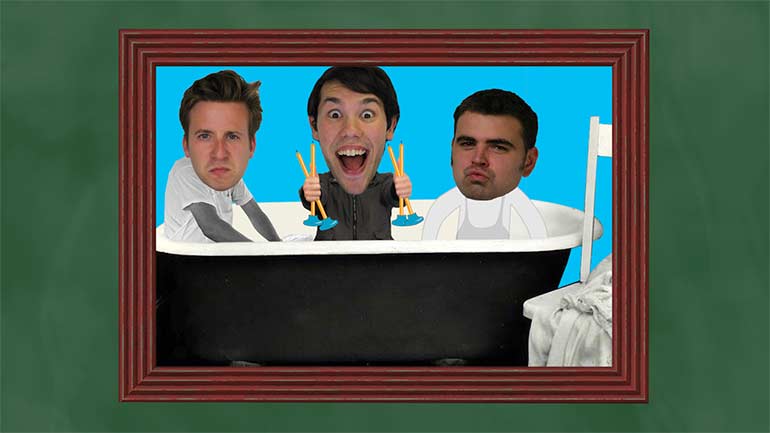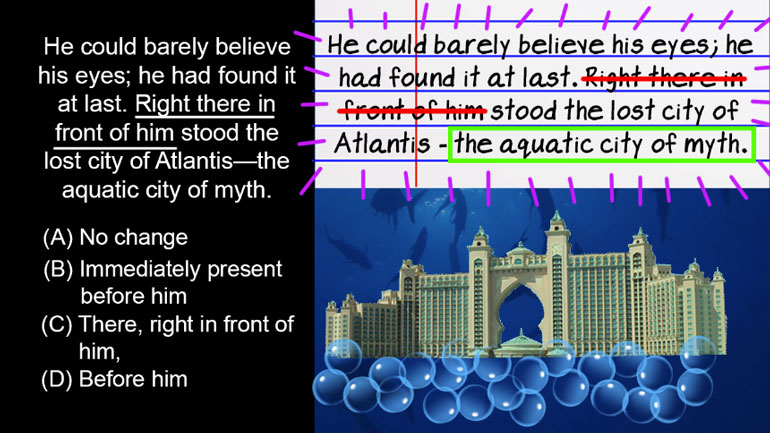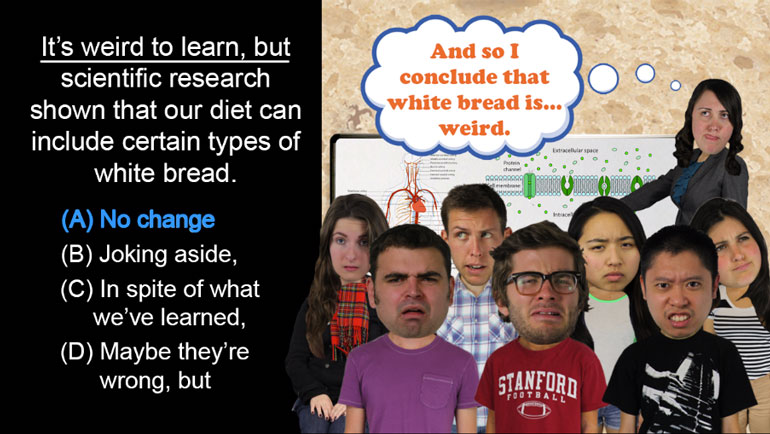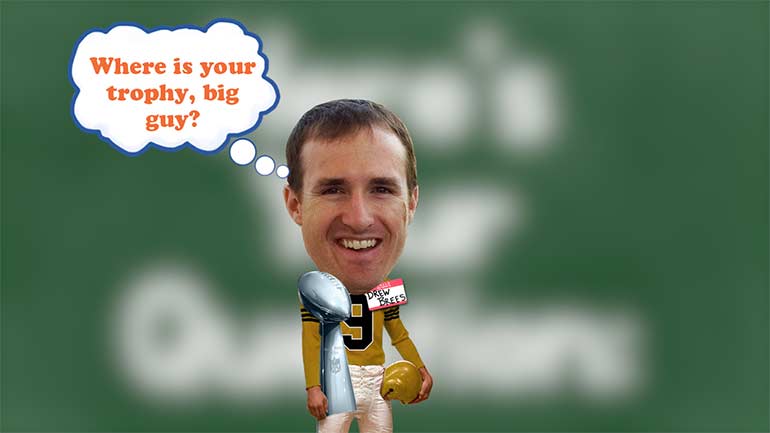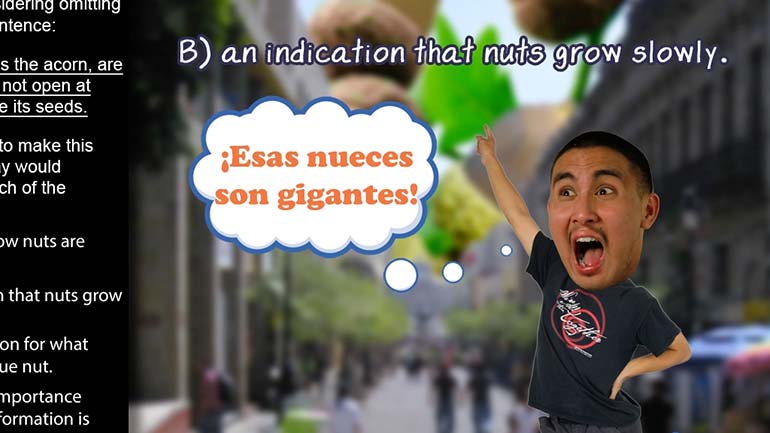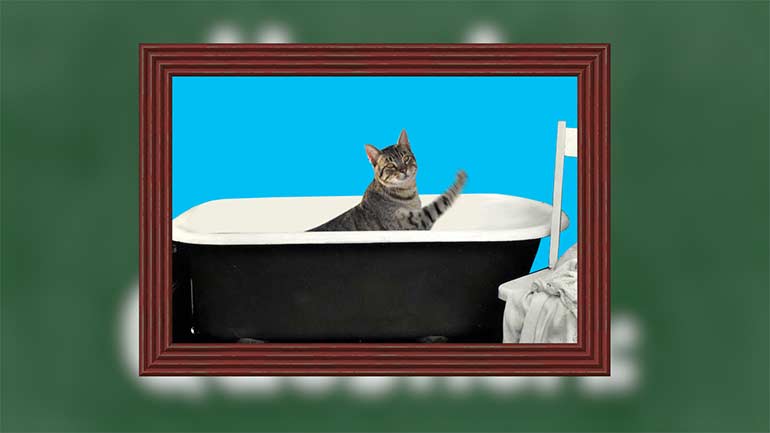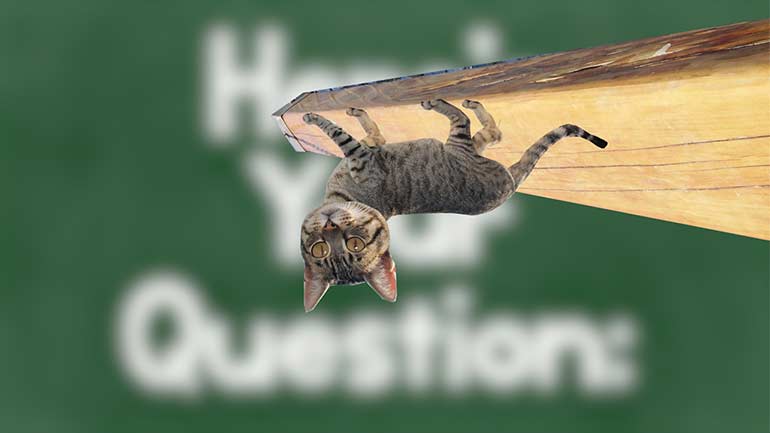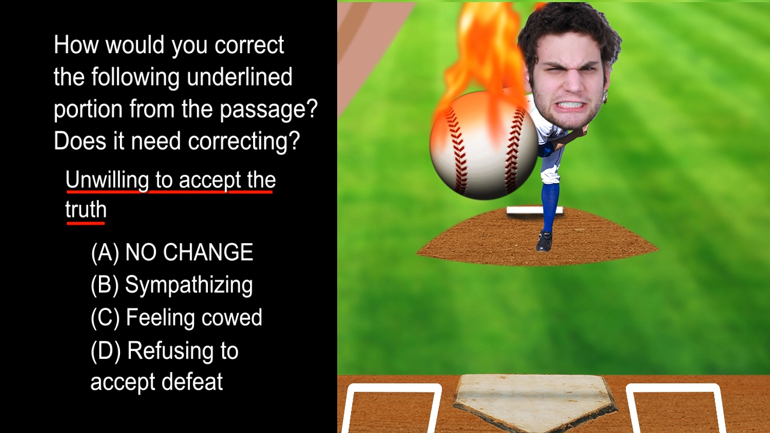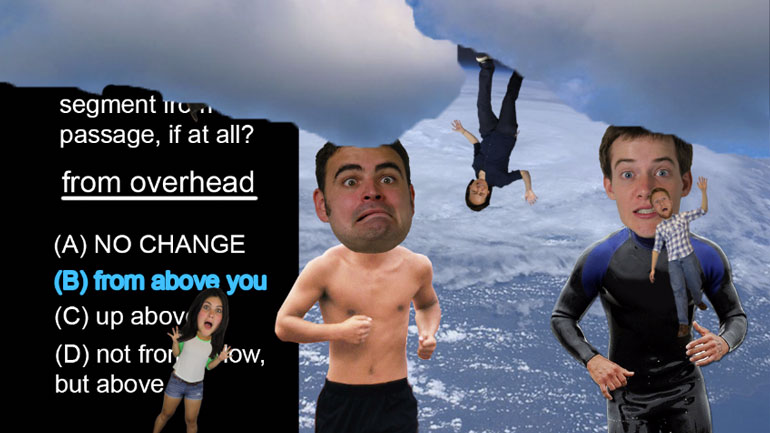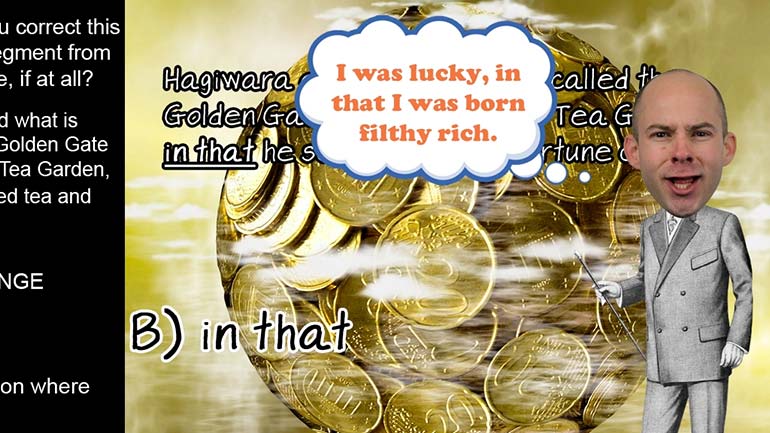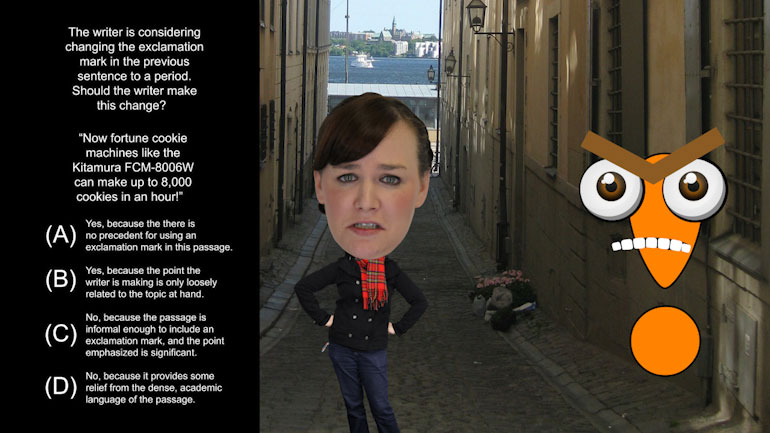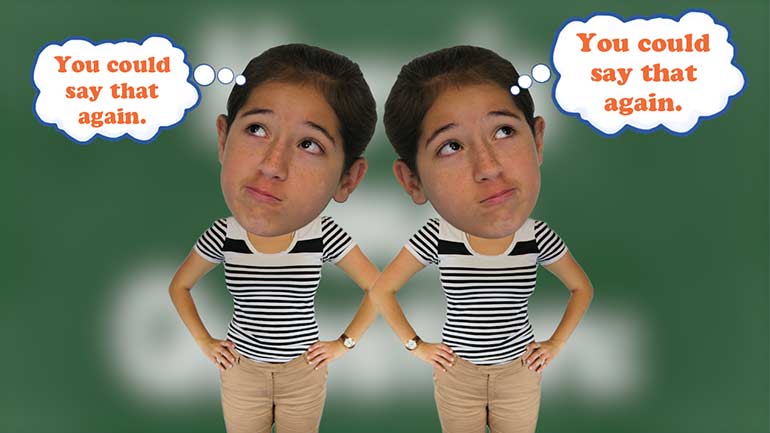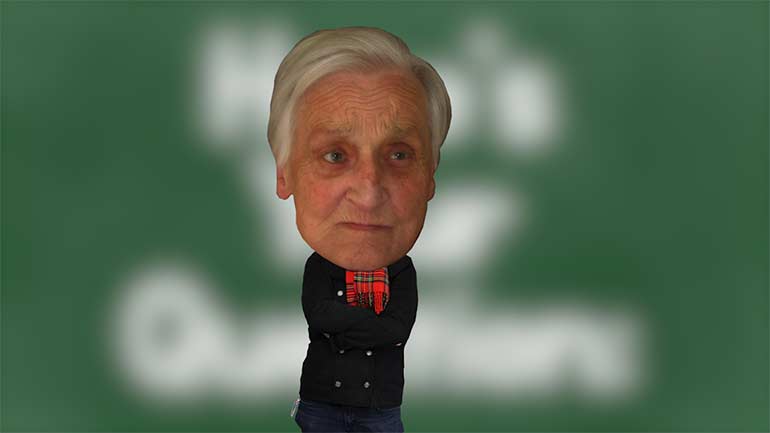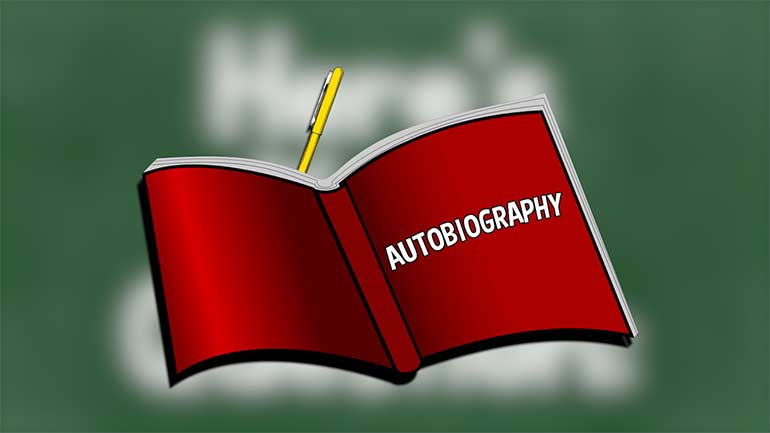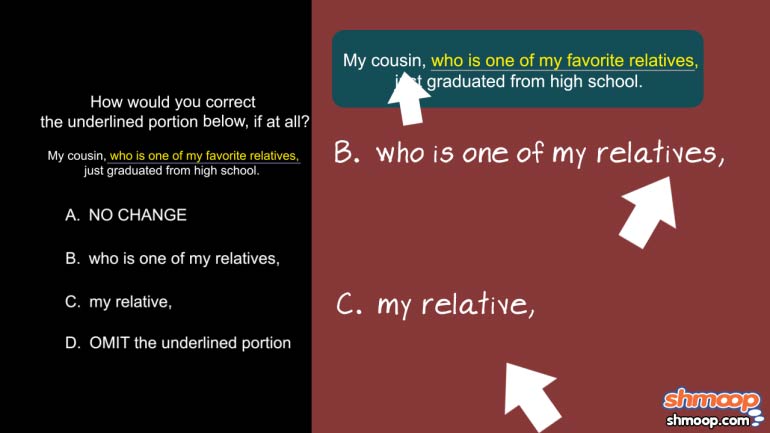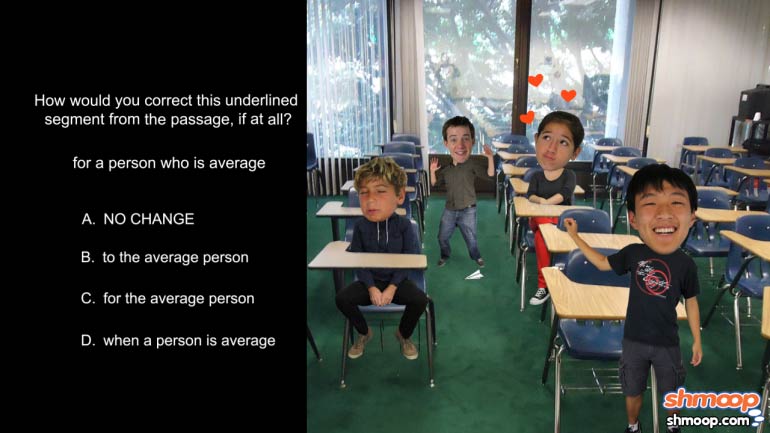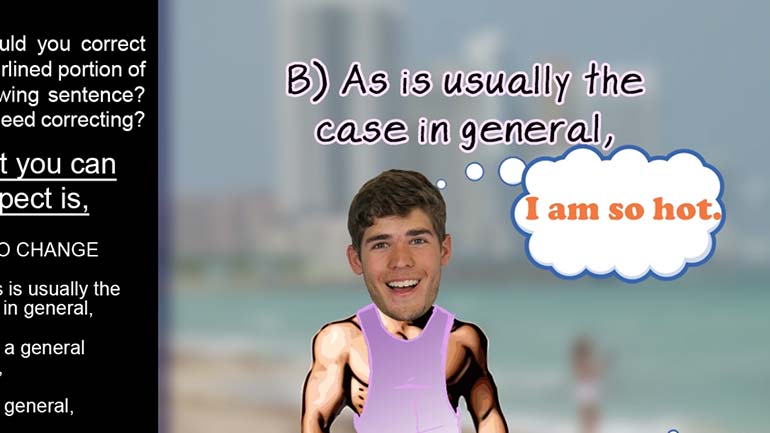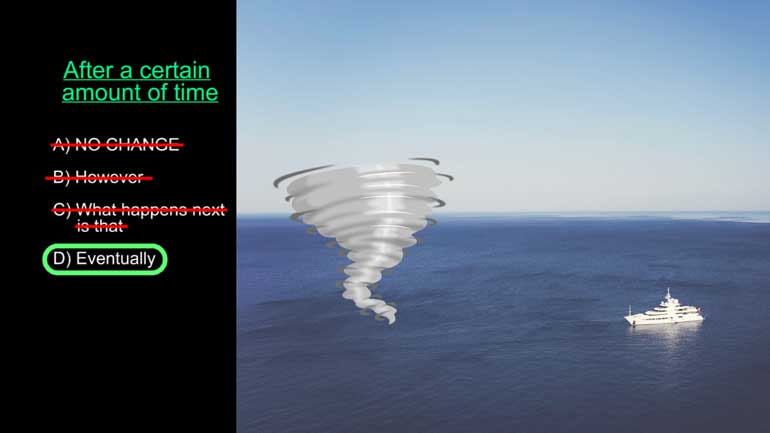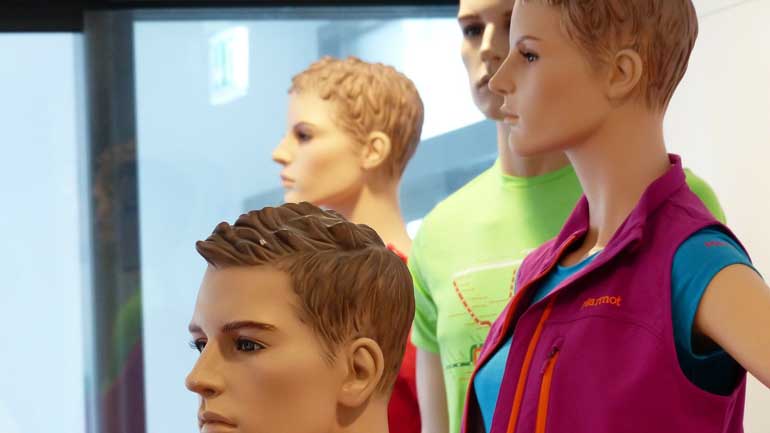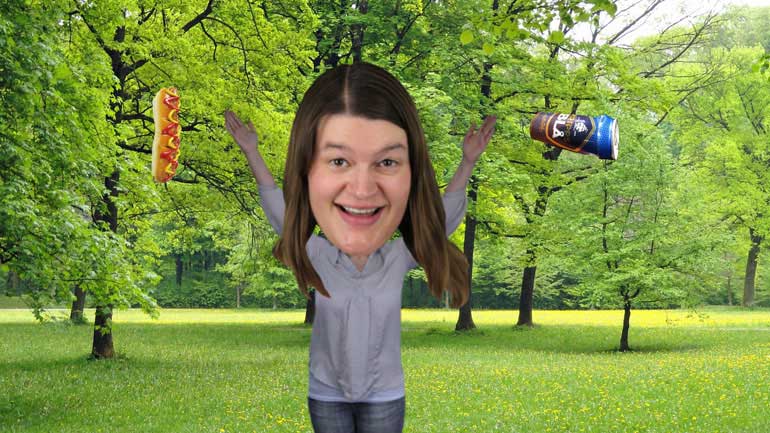ShmoopTube
Where Monty Python meets your 10th grade teacher.
Search Thousands of Shmoop Videos
Rhetorical Skills Videos 50 videos
ACT English: Passage Drill 2, Problem 11. Which of the following sentences would make the most effective transition?
In this ACT English passage drill determine if the writer of the passage may or may not have achieved their proposed goal.
ACT English: Passage Drill Drill 3, Problem 2. What would the paragraph lose if the writer omits the underlined phrase?
ACT English 4.5 Passage Drill 175 Views
Share It!
Description:
ACT English: Passage Drill Drill 4, Problem 5. Which choice best connects the two clauses?
Transcript
- 00:03
Here’s your Shmoop du jour, brought to you by Japanese Tea Gardens.
- 00:07
Will they be the next Starbucks? One can dream.
- 00:31
How would you correct this underlined segment from the passage, if at all? where?
- 00:37
And here are the potential answers...
- 00:43
This question asks us to take a look at the conjunction “where” to see if it’s really
Full Transcript
- 00:46
the best thing for this sentence.
- 00:48
Quick review: we know “where” is a conjunction because it’s connecting the clauses...
- 00:53
“Hagiwara owned what is now called the Golden Gate Park Japanese Tea Garden”...
- 00:59
and... “he served tea and fortune cookies.”
- 01:03
Dude, we wish there was a restaurant like that in our neighborhood.
- 01:06
We’ll zero in on choice (B) first.
- 01:09
Yeah, this one is totally a no-go.
- 01:10
The phrase “in that” just isn’t the right thing to connect these two clauses.
- 01:15
Usually, “in that” is used to specify the way in which a statement is true.
- 01:20
Something like, “I was lucky, in that I was born with a silver spoon in my mouth.” Like that would work.
- 01:26
Also, it would be awesome.
- 01:28
This sentence, however, requires a connector that’s about location in some way.
- 01:32
Choice (C) does contain the word “location.”
- 01:35
The problem is that it also contains the word “where,” which is redundant because we
- 01:40
already know the tea garden is a location.
- 01:43
(This is beside the point, but we also think the tea garden is a state of mind.)
- 01:48
Now, on to choice (D), which suggests that we omit the word “where” entirely.
- 01:53
This is incorrect because if we omitted the conjunction, the sentence would be a comma splice.
- 01:58
There has to be a conjunction or a semicolon connecting these clauses;
- 02:01
otherwise, they just can’t stay together.
- 02:05
This brings us back to choice (A).
- 02:07
It turns out that "where" was the word we needed all along. It works perfectly as a
- 02:12
conjunction that indicates the location in which Hagiwara served fortune cookies.
- 02:18
If you want longitude and latitude numbers, you'll need to look those up for yourself.
Related Videos
ACT English: Punctuation Drill 2, Problem 2. Where should the semi-colon be placed?
ACT English: Punctuation Drill 3, Problem 1. How should this sentence be changed so that it is grammatically correct?
ACT English: Punctuation Drill 3, Problem 2. How should we properly hyphenate the words in this sentence?
ACT English: Punctuation Drill 3, Problem 4. Which choice best formats this list of items?
ACT English: Punctuation Drill 2, Problem 1. Which choice of punctuation best completes the sentence?

